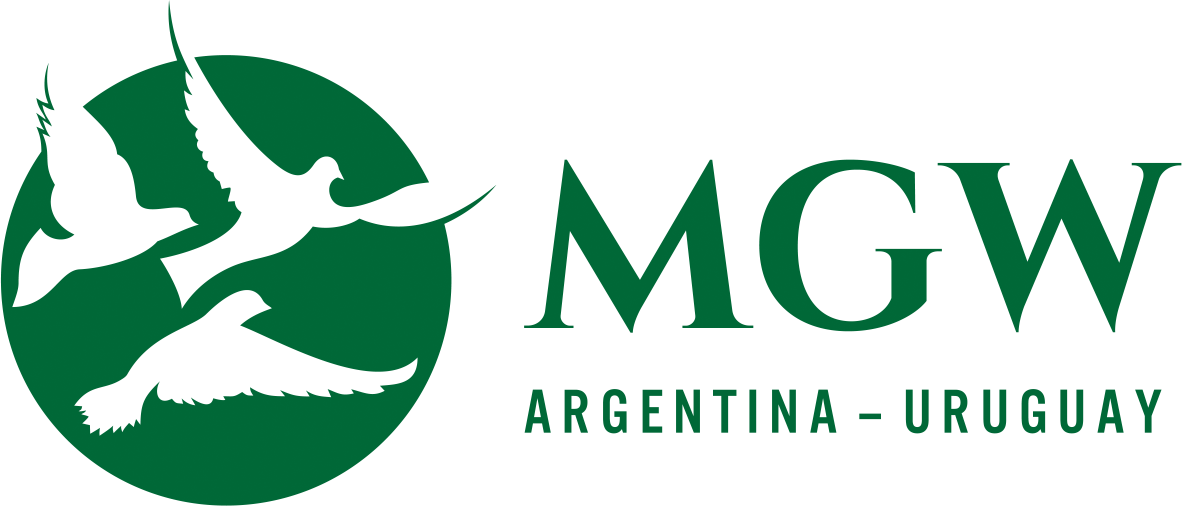Seasons
| SPECIES | SEASONS | TOTAL / PERSON | LODGES | NOTES |
|---|---|---|---|---|
| Dove | Year Round | Purchased with Package | La Volanta, La Dorada (Argentina), and Estancia Ninette (Uruguay) | No Limit |
| Pigeon | Mar. 1 - Nov. 1 | $750/day | Potrerillos de Larreta (Cordoba, Argentina) | Limit: 100/day |
| Perdiz | May 1 - July 31 | $875/day | Estancia Ninette (Uruguay) | Limit: 10/day |
| Duck/Dove Combo | May 1 - July 31 | $3300/person | Reserva Rio Grande | Ducks-Limit 25/hunt & Doves-No Limit |
| Golden Dorado | Jan. 1 - April 30 Oct. 1 - Dec. 31 | $750/day | Estancia Ninette (Uruguay) | Catch & Release |
Species
The bird that is present in Cordoba Region is referred to as the eared dove - named for the dark patch of feathers located on the side of the bird's upper cheek that has the appearance of an ear. The eared dove resembles the mourning dove that most American hunters are used to shooting - if placed side by side, these 2 species are difficult to tell apart. The eared dove thrives in the Cordoba region primarily due to the farming practices and the vast number of roost areas. Recent estimates indicate that there are over 50 million eared doves that reside in the Cordoba Region.
A total of 13 different species of duck migrate through and live in the areas that MGW hunts; however, the more commonly hunted species are as follows: rosy-bill pochard, Chiloe wigeon, ringed teal, Brazilian teal, speckled teal, silver teal, cinnamon teal, yellow billed pintail, white-cheeked pintail, red shoveler, white-faced whistling duck. The primary duck hunting area is located on the Pirana River close to the city of Santa Fe. It is here that a duck hunting paradise exists with numerous resident ducks along with various migrating species providing the duck hunter with ample opportunity.
The most plentiful pigeon species are the picazuro, manchada, and the casera. As is the case with the eared dove, the pigeons in the Cordoba Region are numerous in the particular areas that they frequent. Typically, the terrain where the doves and pigeons are found is different so only select Maers and Goldman Lodges are located in the areas where the pigeons are great in numbers. Hunting pigeons is a unique experience. Pigeons decoy extremely well so it is almost like hunting ducks on dry land - an experience that you will want to enjoy first hand.
The perdiz is one of the most exciting upland game birds that one will ever encounter. These challenging game birds reside in areas of low to medium cover. They are quick runners similar to their distant cousin the ostrich. The coloration is similar to that of a hen pheasant, has slightly more mass than a bob-white quail, and stands similar to that of a gray partridge. The flush of perdiz is exhilarating as it will make a hunter's heart stop as they explode into the air and fly low and quickly in an attempt to reach safety. Coveys are typically very small - generally only singles or pairs. The well-trained hunting dogs of MGW will make any upland hunter smile as they cover the field in search of these challenging birds.
What Happens to the Birds?
At MGW, we are deeply involved in helping support our local communities by giving back. Many of the birds that go unwanted by shooters will be donated to the local community. Locals use the birds for their consumption, they use the parts of the birds in swine farming operations, and the local fertilizer plant uses the birds as feedstock to generate their fertilizer. If you would like a taste of fresh dove, our experienced chef here at MGW will wow you with an unforgettable appetizer.

